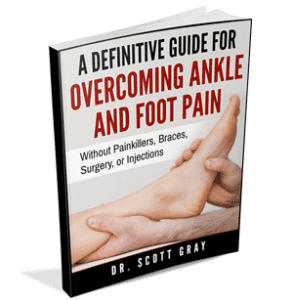Causes and Prevention: Why Your Foot and Ankle Are Killing You?
The condition of your feet can give you a lot of clues about multiple medical issues, like diabetes, arthritis, or sprain. Foot and ankle pain is a widespread problem among people of all ages and gender, and it refers to any kind of discomfort in your foot and ankles.
92.1% of people suffering from rheumatoid arthritis suffer from foot pain, and it substantially impacts their life and work. – NCBI
Here we have made a list of causes that might be killing your foot and ankle.
Pain
No pain should be ever ignored, whether it is acute or chronic. When it is food and ankle pain you can experience:
Pain in the morning
Right after getting up when you take the first step, do you feel heel pain or pain across bottom of foot? If yes, it may be an indication of arthritis or plantar fasciitis.
Plantar Fasciitis: According to the American Academy of Orthopedic Surgeons, around 2 million people seek treatment for plantar fasciitis. The condition is prevalent in a large section of the population – adolescent, older adults, athletes. Plantar fasciitis is caused when plantar fascia, the ligament that supports the arch of the foot, develops tiny tears and become inflamed. This is the prime cause why your heel pains when you take the first step in the morning. The pain subsides when after walking or heel moment for a few minutes, but can come back after prolonged walking or exercise. Other symptoms of plantar fasciitis are – deep ache in arch, sharp heel pain or tenderness after exercise.
Some common tips to lessen the symptoms are:
- Wear supportive shoes with good arch support and well-cushioned shoes.
- Stretching exercise for foot muscle, gentle stretching before rigorous exercise.
- Rest and ice packs temporarily help to relieve sore feet.
- Reduce excess weight.
Arthritis: Arthritis is an umbrella term of more than a hundred kinds of diseases. Arthritis means inflammation and swelling around the joints and soft tissue surrounding them which is the prime cause of pain and stiffness. Osteoarthritis, which causes swelling and pain, is one of the top reasons for foot and ankle pain.
Treatment of osteoarthritis includes – medication injected into the joints, anti-inflammatory drugs, pain relievers, arch supports, physical therapy, weight control.
Ankle Sprain & Injuries in Sports
Multiple factors cause ankle pain, and ankle sprain is one of the most common and prominent reasons among them. It makes up almost 85% of all ankle injuries.
An ankle sprain is an injury to the ligaments that connect bones of the leg to the foot. In the majority of cases, the injury occurs when a person accidentally twists or turns his/her ankle. This stretches or tears the ligaments and forces the ankle joint out of its normal position. Sometimes, during physical activity ankles twist as a result of a sudden movement which causes one or more ligament around the ankle to tear. Swelling and bruising can happen as a result of these ankle injuries in sports. The patient feels pain and discomfort when placing weight on the affected area. Due to sprain, tendons, cartilage and blood vessels may also get damaged. Ankle sprains can happen to anybody irrespective of age or gender. However, participants in sports are more prone to this. Walking on an uneven surface or wearing inappropriate footwear are also prime reasons for this injury.
Symptoms of ankle sprain – swelling, tenderness, bruising, pain, stiffness, inability to put weight on the affected area.
Treatments – use an ACE bandage to wrap the ankle, wear a brace to support the affected part, using crutches in extreme cases, elevate foot with pillows to subside swelling, take medication to manage pain, take plenty of rest, etc.
Surgery is rare for a sprained ankle, but it is performed when the damage to ligaments is severe.
Numbness in foot
Numb feet indicates a host of several health issues which may range from alcoholism to poor circulation. There are many causes of numb feet, including:
Peripheral artery disease (PAD) – It is a common circulatory problem in which the blood flow to the limbs is reduced due to narrowed arteries. In this condition, your legs, feet, and ankle don’t receive sufficient blood flow to meet the demand. This causes leg or feet pain and sometimes numbness which can be often accompanied with muscle pain, cramping in legs or arms. All these get triggered by activities, like walking, which disappears after rest. The severity of this condition varies, ranging from mild discomfort to debilitating pain. Sore feet, coldness in feet, change in color of legs, painful cramps in hips, thighs or calf muscles are other signs of this condition.
Peripheral artery disease is also a sign of widespread accumulation of fatty deposits in arteries which reduce blood flow to hear, brain as well as legs.
Less common causes of PAD are – blood vessel inflammation, injury, unusual structure of muscles or ligaments, radiation exposure.
Factors that increase the risk of developing the peripheral artery disease are – diabetes, obesity, smoking, high blood pressure, high cholesterol, old age, family history of this condition, heart disease, high levels of homocysteine.
Preventive measures to subside feet pain due to PAD are – quit smoking, keep sugar level in control, regular exercise, keep blood pressure levels and cholesterol under control, maintain a healthy weight, eat food low in saturated fat.
Swelling
Swollen feet may be uncomfortable and painful and makes leg movement difficult. There is a variety of reasons for swollen feet which is commonly referred to as Edema. Edema is a condition where the body retains too much water. It makes many parts of our body, including legs, hands, face, feet, and arms swell. Medication, pregnancy, sprain in leg, or any underlying disease may be the cause of swollen feet. In any of these conditions, you may feel puffiness of tissue directly under your skin, stretched or shiny skin, etc. If left untreated, edema can result into – painful swelling, difficulty in walking, stiffness, increased risk of infection in the swollen area, decrease blood circulation, skin ulcer, shortness of breath, chest pain, and fever. All these are an indication of emergency medical attention.
Want to See How We Can Help You?
Claim A Free 20 Minute Discovery Visit….
Sharp Ache By The Toes…
You may feel pain in the heads of metatarsal bones, the area just behind the toes in the fall of foot. This condition is referred to as metatarsalgia, and the typical symptoms of this condition are – burning pain in the ball of the foot which worsens with barefoot walking or walking on hard surfaces and tingling sensation in the toes, pain across bottom of foot. Metatarsalgia occurs due to various reasons including – wearing shoes that poorly fit, high impact exercise, ankle injuries in sports, overweight, tiny breaks in toe bones, high arches etc.
Preventive measures to lessen or avoid this condition are:
- Wear properly fitting footwear which is essential for a healthy foot. Your footwear should ideally be well-cushioned, and supportive.
- Reduce excess weight which puts excess pressure on the feet.
- Wear arch support if you have a high arch.
- Give time to heal, especially if you have a foot injury ankle injuries in sports.
Foot Injuries
There are plenty of types and cases of foot injury. The most common type of foot and ankle injury occurs among sportsperson or athletes, especially if they are diabetic. If injury is severe, you should seek medical attention. However, to avoid the condition, you can take some precautionary measures, like wear supportive shoes, switch shoes in every few months if you are a runner, add a core routine which helps improve balance. All these measures help in reducing excess bouncing while running. Plus it also prevents twisting and falling.
Diabetics are prone to foot injuries, especially in advanced stages of the disease as there are chances of developing a condition called Charcot Neurotherapy which is marked by lack of sensation in the bottom of their feet.
Thus, there are multiple reasons for foot and ankle pain. In severe cases, it is recommended to see a doctor. In general, try to keep your feet and ankle happy by wearing comfortable footwear or supportive shoes, maintaining a healthy weight and staying active.
See A Doctor Of Physical Therapy
If you’re looking for a natural and non-invasive route to overcoming your ankle or foot pain, you should see a Doctor of Physical Therapy. A specialty trained physical therapist will be able to discern why your foot keeps hurting and fix the source of your problem and not just your symptoms.
A physical therapist offers an array of treatments ranging from myofascial release, mobilization of stiff joints, patient education, and specific exercises that will help you overcome your foot and ankle pain.
To see all the different ways our team can help you, click here to enquire about cost and appointment availability.

GET YOUR FREE REPORT
A Definitive Guide for Overcoming Ankle and Foot Pain
About Author: Dr. Scott Gray
Dr. Scott Gray is an internationally recognized and expert physical therapist specializing in sport, athletic, and back and neck injuries. He is the inventor of a revolutionary form of treatment called the GRAY METHOD. This type of treatment unlike others, addresses the CAUSE rather than just your SYMPTOMS with a full body approach. For more information on how to ease or overcome your injury, go to www.backinmotionsspt.com.





